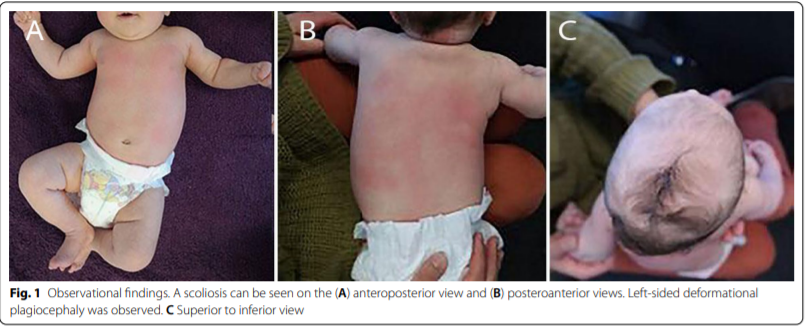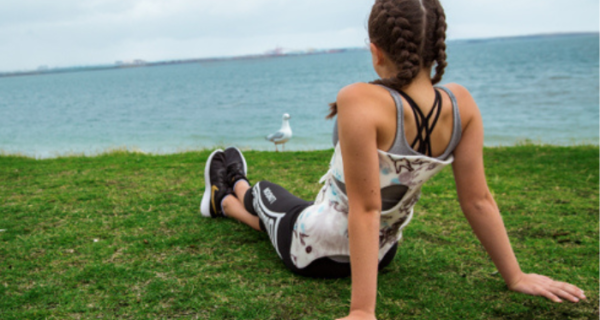Background on Treatment of Infants with Idiopathic Scoliosis
Treatment of infants with idiopathic scoliosis usually involves serial casting. This results in numerous anaesthetics for the young child, which is not ideal. There is a lack of solid literature regarding the use of bracing in these young children despite the advantages that bracing can be provided without anaesthetics. McAviney and Brown (2022) have presented a case study of an infant with idiopathic scoliosis who was treated with a novel thoracolumbosacral orthosis (ScoliBrace) (1).
The Case Presentation
An 11-week-old, Dutch-Australian female patient presented to the lead author’s clinic in 2014 after the mother noticed the abnormal curvature approximately 1.5 months after birth. The patient did not present with any neurological symptoms or other red flags and thus treatment with a ScoliBrace was determined as an appropriate treatment option, particularly because the referral to the orthopaedic surgeon presented a lengthy delay and earlier chiropractic treatment had had no effect.
The infant presented with a single, large, left-convex, thoracic scoliosis and left-sided deformational plagiocephaly. The curve was also very rigid as demonstrated by little correction during side bending and light traction. The single thoracic curve measured 44 degree Cobb angle with apex at T11 and the Rib Vertebral Angle Difference (RVAD) was 14 degrees.
Therapeutic Intervention
The patient was prescribed a ScoliiBrace Orthosis (Sydney, Australia). The orthosis was a lightweight, rigid, overcorrective TLSO. T
his was a specific, customised design for the patient based on three-dimensional (3D) scans and constructed using computer-aided design and manufacture software (CAD/CAM). The 3D scans were acquired using the BraceScan system.
Brace wear was slowly increased. At the 1-month point the curve had reduced from 44 degrees to 31 degrees (RVAD 8 degrees).
Final Results/Outcomes
The patient presented with a scoliosis that was reduced from 44 degrees to 7 degrees over a period of eight months. Adam’s forward bend testing, scoliometer readings, and spinal ultrasounds taken at the two year follow up suggested a complete resolution of scoliosis. As there was no clinical evidence of scoliosis a more recent X-ray was not taken to minimise exposure to radiation for the child.
Overall, this patient was able to comfortably wear the brace, as indicated by good compliance, and consequently avoided serial casting. The authors have presented a case of infantile scoliosis whereby the ScoliBrace system was shown to be effective for treating this patient. The patient’s mother had also stated that they would not do anything differently if placed in the situation again.
Authors: Jeb McAviney and Benjamin Brown
Review by: Rosemary Marchese – Physiotherapist, ScoliCare Head of Education & Research
Reference:
McAviney, J. and Brown, BT. (2022). Treatment of Infantile idiopathic scoliosis using a novel thoracolumbosacral orthosis: a case report. Journal of Medical Case Reports 16: 20. https://doi.org/10.1186/s13256-021-03168-8
Download the report here.



